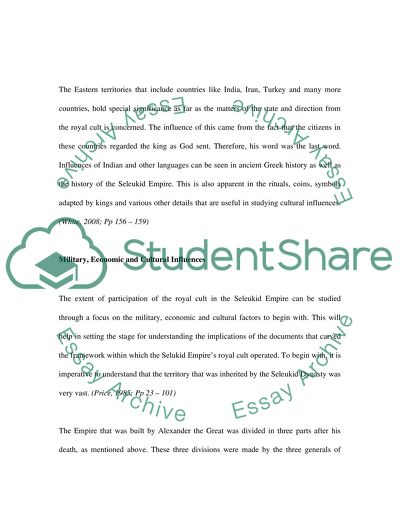Cite this document
(“Was royal cult in the Seleukid empire an empire-wide phenomenon, Essay”, n.d.)
Was royal cult in the Seleukid empire an empire-wide phenomenon, Essay. Retrieved from https://studentshare.org/miscellaneous/1545065-was-royal-cult-in-the-seleukid-empire-an-empire-wide-phenomenon-directed-from-above-or-did-it-belong-mostly-in-the-world-of-the-greek-cities
Was royal cult in the Seleukid empire an empire-wide phenomenon, Essay. Retrieved from https://studentshare.org/miscellaneous/1545065-was-royal-cult-in-the-seleukid-empire-an-empire-wide-phenomenon-directed-from-above-or-did-it-belong-mostly-in-the-world-of-the-greek-cities
(Was Royal Cult in the Seleukid Empire an Empire-Wide Phenomenon, Essay)
Was Royal Cult in the Seleukid Empire an Empire-Wide Phenomenon, Essay. https://studentshare.org/miscellaneous/1545065-was-royal-cult-in-the-seleukid-empire-an-empire-wide-phenomenon-directed-from-above-or-did-it-belong-mostly-in-the-world-of-the-greek-cities.
Was Royal Cult in the Seleukid Empire an Empire-Wide Phenomenon, Essay. https://studentshare.org/miscellaneous/1545065-was-royal-cult-in-the-seleukid-empire-an-empire-wide-phenomenon-directed-from-above-or-did-it-belong-mostly-in-the-world-of-the-greek-cities.
“Was Royal Cult in the Seleukid Empire an Empire-Wide Phenomenon, Essay”, n.d. https://studentshare.org/miscellaneous/1545065-was-royal-cult-in-the-seleukid-empire-an-empire-wide-phenomenon-directed-from-above-or-did-it-belong-mostly-in-the-world-of-the-greek-cities.


